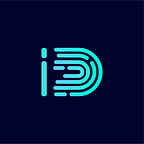How to sign with MyWalliD and ETh addresses on DocuSign?
This article is a user guide to detail the steps of the signature process used by WalliD ETH signatures on DocuSign. To know all about this product check our introductory article.
1. Create a DocuSign account with WalliD
WalliD ETH signatures on DocuSign are currently live in Private beta. Apply in this form to activate a DocuSign account with ETH signatures type enabled. An activation link will be sent once the application is reviewed and approved by WalliD’s team.
2. Upload PDF Documents
Once activated you’l have access to the DocuSign’s platform and will land in the document management signature Dashboard. Click in the SART button and Send an Envelope to access the Envelope manager section
3. Provide recipient info and select ETH signature type
In the envelope management area you’ll be able to upload as many documents and add as many signers as you wish. UPLOAD the files in the proper section and provide the email address of the intended signers. You can also customise a the subject and text of the message that will be sent out to the signers’ email accounts. Click NEXT to access the document editor dashboard.
Note:Confirm ETH signatures are selected by default under each signer Signature type
4. Customise the document and signature visual elements
In this area you’ll be able to drag boxes into the section of the document that you wish the visual representation of the signatures to be featured in. Select SIGNATURES on the left and pick the RECIPIENTS on the right panels to drag and drop the boxes. Click SEND on the top of the page to send the envelope to signers’ email addresses.
Note: DocuSign allows file editing with customisable forms and other features you can also benefit from. Check their user guides here.
5. Receive and open document
The signers will receive an email with the envelope and a link to a DocuSign URL containing the content of the document . Click CONTINUE after reviewing the documents’ content and type in the text you wish to visually be featured in the file as your signature (e.g. fveiga.eth). Once a signature design is adopted, click ADOPT AND SIGN to trigger WalliD’s signature process.
6. Connect with MyWalliD
WalliD’s iframe will pop-up and request a connection approval from the user’s MyWalliD wallet. If a wallet is not detected in the browser, a link to install and setup a new one will be displayed.
7. Sign documents with a wallet address or ENS domain
Choose an address or ENS domain associated to the MyWalliD wallet connected to the iframe in order sign the PDF with it. A pop-up will be triggered from your browser extension to approve the signature.
Note: You can also use an Ethereum address managed by another wallet such as Metamask by signing MyWalliD and adding it as an ID asset
8. Mint an NFT with the Proof-of-Signature
In this private beta version, all Proofs-of-Signature will be minted on the Polygon test network under an ERC-1155 smart contract as an NFT and on behalf of each recipient after completing their signatures. The NFT will contain the name of the document, a unique ID, the hash of the signed document as well as each wallet signature embedded in it. You can learn more about the Proof-of-signatures as NFTs in our article here.
Verify or buy Proofs-of-Signature
The Proof-of-signature smart contract are available as a collection on OpenSea. Anyone can access it to browse and access the original signed document. Each document will be minted and owned by the signers but community members are free to bid to collect their most cherished documents with a Proof-of-Signature.
